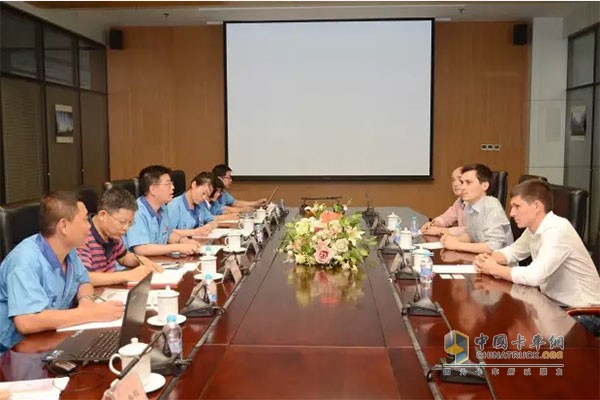During the talks, General Manager Ma Xuyao ​​briefed the guests on the status of production and operations of the Fast Group, future development plans, and international joint ventures and cooperation. He said that relying on the national "One Belt and One Road" policy guidelines, Fast Technologies has formulated the "5221" development strategic goal and is confident to build a traditional, intelligent way by developing new products, introducing new technologies and expanding new fields. A comprehensive, comprehensive, and diversified product platform is focused on building Fast as a supplier of high-quality automotive transmission systems in the world. It is hoped that both parties will further strengthen their international cooperation relations and expand cooperation areas, laying a solid foundation for the long-term sustainable development of both companies. The guests of Russia’s Kamaz Automobile Factory spoke highly of Fast's innovation and development achievements and expressed their good intention to further strengthen cooperation.
A hoist is a device used for lifting or lowering a load by means of a drum or lift-wheel around which rope or chain wraps. It may be manually operated, electrically or pneumatically driven and may use chain, fiber or wire rope as its lifting medium.
The basic hoist has two important characteristics to define it: Lifting medium and power type. The lifting medium is either wire rope, wrapped around a drum, or load-chain, raised by a pulley with a special profile to engage the chain. The power can be provided by different means. Common means are hydraulics, electrical and air driven motors. Both the wire rope hoist and chain hoist have been in common use since the 1800s, however mass production of an Electric Hoist did not start until the early 1900s and was first adapted by Germany. A hoist can be built as one integral-package unit, designed for cost-effective purchasing and moderate use, or it can be built as a built-up custom unit, designed for durability and performance. The built-up hoist will be much more expensive, but will also be easier to repair and more durable. Package units were once regarded as being designed for light to moderate usage, but since the 60s this has changed. Built-up units are designed for heavy to severe service, but over the years that market has decreased in size since the advent of the more durable packaged hoist. A machine shop or fabricating shop will use an integral-package hoist, while a Steel Mill or NASA would use a built-up unit to meet durability, performance, and repairability requirements. NASA has also seen a change in the use of package hoists. The NASA Astronaut training pool, for example, utilizes cranes with packaged hoists.
Hoist/Hoisting Mechanism,Hoisting Mechanisms,Hoist Mechanism,Hoist Motor Eurocrane (China) Co., Ltd. , https://www.craneparts.pl The two sides talked to each other
The two sides talked to each other
On the morning of June 13, 2016, guests of the Russian Karmaz Automobile Factory visited Fast and were welcomed by Ma Xuyao, general manager of the Fast Group. The two sides held talks in the first conference room of the institute.